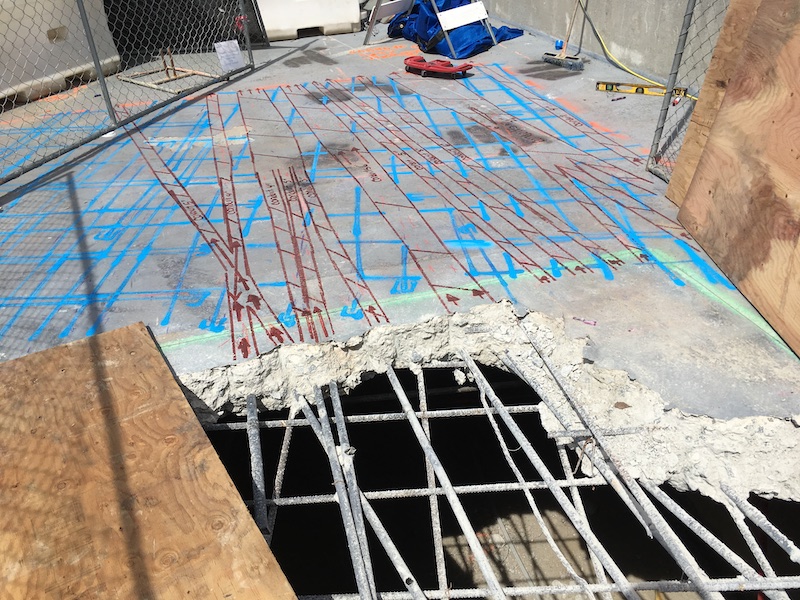Explore RainierGPR Service Areas for Specialist Concrete Scanning
Explore RainierGPR Service Areas for Specialist Concrete Scanning
Blog Article
Concrete Scanning: A Vital Action Towards Making Sure Structural Honesty and Safety
In the realm of construction and infrastructure maintenance, the significance of concrete scanning can not be overemphasized. By employing sophisticated innovation and techniques, concrete scanning serves as an essential tool in guaranteeing that the honesty and safety and security of bridges and buildings are promoted to the highest possible standards.
Significance of Concrete Scanning
Concrete scanning plays an important function in guaranteeing the structural honesty and security of buildings and framework tasks. By using sophisticated modern technologies such as ground-penetrating radar (GPR) and electro-magnetic induction, experts can non-destructively check concrete frameworks to detect prospective flaws, gaps, ingrained objects, and reinforcement layout. This procedure enables very early discovery of abnormalities that might jeopardize the stability of a structure, preventing expensive problems and ensuring the safety of residents.
Prior to drilling, cutting, or coring right into concrete, scanning aids recognize the exact locations of rebar, post-tension cables, and other ingrained elements, decreasing the danger of unexpected hits that might lead to structural weak points. Furthermore, concrete scanning help in top quality control by confirming the density of concrete covers and finding any type of inconsistencies that might influence the general resilience of the structure.
Technology for Concrete Inspection

Advantages of Early Discovery
Timely detection of structural concerns can dramatically reduce dangers and guarantee the long life of building tasks. By determining possible issues at an early stage in the building procedure, stakeholders can take proactive procedures to resolve issues prior to they rise into bigger and a lot more expensive problems. One of the crucial benefits of early detection is the prevention of architectural failures, which can posture significant safety and security dangers and lead to task delays and financial losses.
Furthermore, very early discovery enables timely repairs and upkeep, which can aid expand the life-span of the structure. By addressing concerns promptly, building teams can prevent expensive repairs or also the need for premature replacement of architectural elements. This positive strategy not only conserves money and time however also improves the overall safety and durability of the construction job.
In addition, early detection can improve job planning and decision-making by giving stakeholders with valuable understandings right into the problem of the structure. Armed with this details, job supervisors can make educated selections concerning building and construction materials, timelines, and methods, leading to extra efficient and successful project outcomes.
Ensuring Structural Security
Guaranteeing the architectural stability of a construction project is paramount to its safety and security and durability. Concrete scanning plays a vital function in making certain structural stability by identifying prospective concerns such as gaps, site delamination, or support corrosion that can endanger the stability of the structure over time.
By making use of sophisticated scanning innovations like ground-penetrating radar (GPR) and electro-magnetic induction, building specialists can non-invasively inspect concrete structures to determine areas of issue below the surface area. This positive method permits the very early discovery of issues or weak points, allowing prompt repair services or support to avoid architectural failings.
Normal concrete scanning during various building phases and throughout the life process of a structure can help maintain its stability, reduce risks, and ensure the safety and security of occupants. By focusing on structural security through concrete scanning, construction article projects can enhance their strength and longevity, eventually contributing to better safety and security and durability.
Preventing Crucial Failings
Implementing regular inspections, such as concrete scanning, can disclose covert defects like spaces, splits, or corrosion that can endanger the honesty of a framework. By using innovative scanning modern technologies like Ground Permeating Radar (GPR) or Concrete X-ray, engineers can non-destructively assess the condition of concrete and recognize weak points that require support or repair service.
Final Thought
To conclude, concrete scanning plays an important function in making sure architectural integrity and safety and security by making use of sophisticated innovation for early discovery of potential problems. This positive technique helps avoid essential failings and makes certain the security of frameworks. It is vital to prioritize concrete assessment as a conventional technique to secure the longevity and safety of structures and facilities.
Concrete scanning plays a crucial duty in making sure the architectural stability and safety and security of structures and framework projects. In addition, concrete scanning aids in quality control by verifying the thickness of concrete covers and detecting any kind of inconsistencies that might influence the overall resilience of the structure. Concrete scanning plays a crucial function in making sure structural stability by detecting possible concerns such as gaps, delamination, or reinforcement rust click to investigate that could endanger the honesty of the structure over time.

In verdict, concrete scanning plays an important duty in making sure architectural stability and safety by utilizing innovative innovation for very early discovery of potential problems.
Report this page